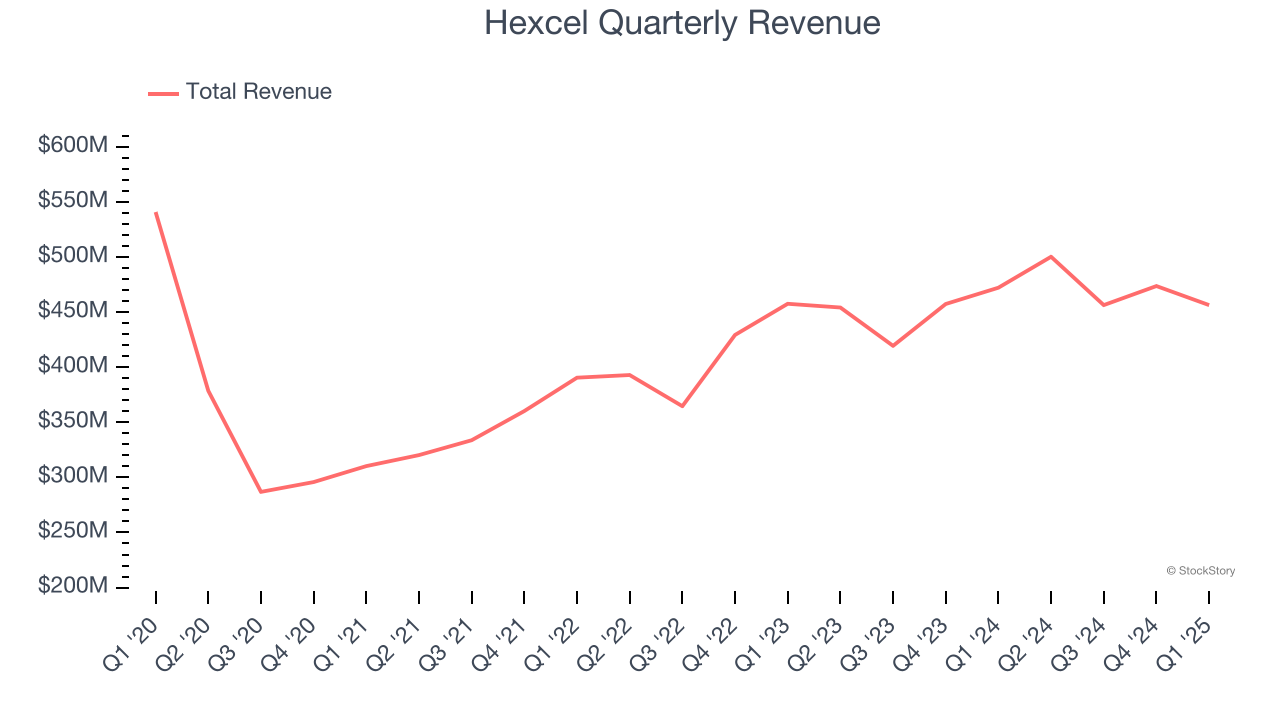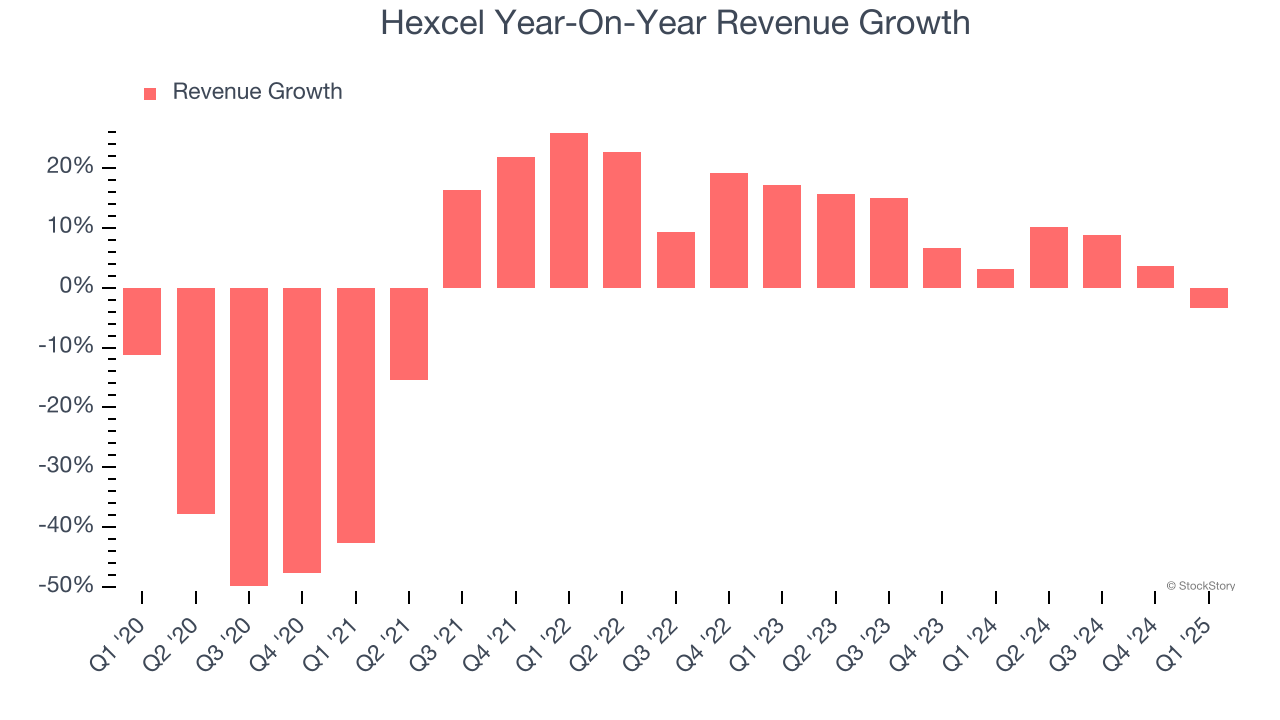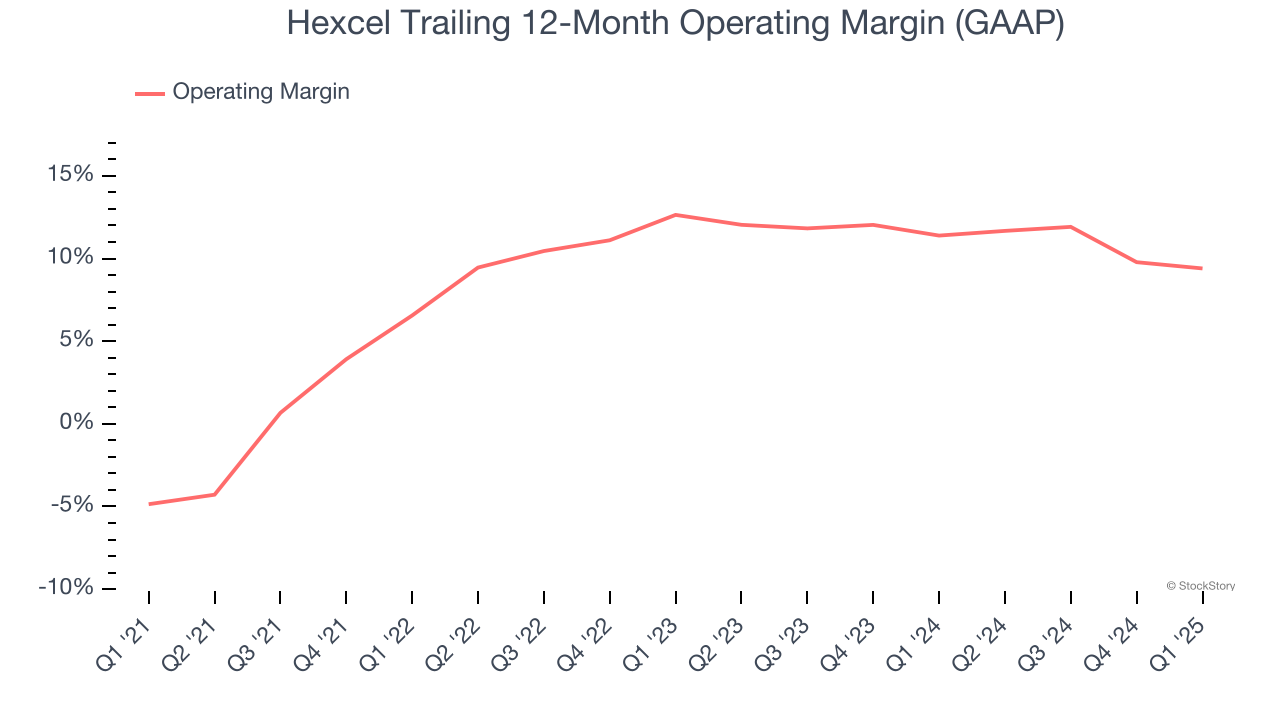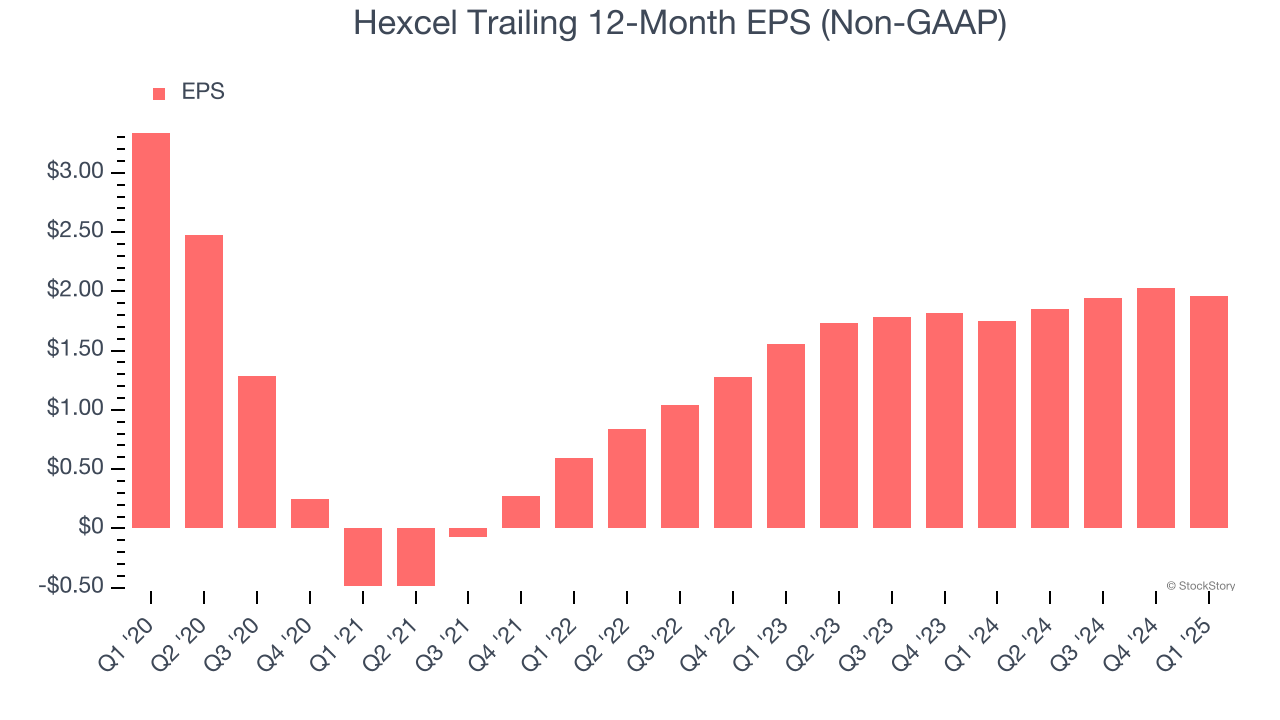
Aerospace and defense company Hexcel (NYSE: HXL) fell short of the market’s revenue expectations in Q1 CY2025, with sales falling 3.3% year on year to $456.5 million. The company’s full-year revenue guidance of $1.92 billion at the midpoint came in 3.4% below analysts’ estimates. Its non-GAAP profit of $0.37 per share was 12.4% below analysts’ consensus estimates.
Is now the time to buy Hexcel? Find out by accessing our full research report, it’s free.
Hexcel (HXL) Q1 CY2025 Highlights:
- Revenue: $456.5 million vs analyst estimates of $472.4 million (3.3% year-on-year decline, 3.4% miss)
- Adjusted EPS: $0.37 vs analyst expectations of $0.42 (12.4% miss)
- Adjusted EBITDA: $83.7 million vs analyst estimates of $88.98 million (18.3% margin, 5.9% miss)
- The company dropped its revenue guidance for the full year to $1.92 billion at the midpoint from $2 billion, a 4.3% decrease
- Management lowered its full-year Adjusted EPS guidance to $1.95 at the midpoint, a 9.3% decrease
- Operating Margin: 9.7%, down from 11.2% in the same quarter last year
- Free Cash Flow was -$54.6 million compared to -$35.7 million in the same quarter last year
- Market Capitalization: $4.19 billion
"The underlying value proposition of Hexcel remains robust, driven by the demand for our innovative lightweight composites, which will generate strong cyclical and secular sales growth over time,” said Tom Gentile, Chairman, CEO and President, Hexcel Corporation.
Company Overview
Founded shortly after World War II by a group of engineers from UC Berkley, Hexcel (NYSE: HXL) manufactures lightweight composite materials primarily for the aerospace and defense sectors.
Aerospace
Aerospace companies often possess technical expertise and have made significant capital investments to produce complex products. It is an industry where innovation is important, and lately, emissions and automation are in focus, so companies that boast advances in these areas can take market share. On the other hand, demand for aerospace products can ebb and flow with economic cycles and geopolitical tensions, which can be particularly painful for companies with high fixed costs.
Sales Growth
A company’s long-term sales performance can indicate its overall quality. Even a bad business can shine for one or two quarters, but a top-tier one grows for years. Hexcel struggled to consistently generate demand over the last five years as its sales dropped at a 3.8% annual rate. This was below our standards and suggests it’s a lower quality business.

We at StockStory place the most emphasis on long-term growth, but within industrials, a half-decade historical view may miss cycles, industry trends, or a company capitalizing on catalysts such as a new contract win or a successful product line. Hexcel’s annualized revenue growth of 7.1% over the last two years is above its five-year trend, but we were still disappointed by the results. 
We can dig further into the company’s revenue dynamics by analyzing its most important segments, Commercial aerospace and Space & defense, which are 61.4% and 38.6% of revenue. Over the last two years, Hexcel’s Commercial aerospace revenue (customers like Airbus, Boeing) averaged 10.3% year-on-year growth while its Space & defense revenue (government customers) averaged 13.3% growth.
This quarter, Hexcel missed Wall Street’s estimates and reported a rather uninspiring 3.3% year-on-year revenue decline, generating $456.5 million of revenue.
Looking ahead, sell-side analysts expect revenue to grow 7.5% over the next 12 months, similar to its two-year rate. This projection is above the sector average and suggests its newer products and services will help sustain its recent top-line performance.
Software is eating the world and there is virtually no industry left that has been untouched by it. That drives increasing demand for tools helping software developers do their jobs, whether it be monitoring critical cloud infrastructure, integrating audio and video functionality, or ensuring smooth content streaming. Click here to access a free report on our 3 favorite stocks to play this generational megatrend.
Operating Margin
Hexcel was profitable over the last five years but held back by its large cost base. Its average operating margin of 7.8% was weak for an industrials business.
On the plus side, Hexcel’s operating margin rose by 14.3 percentage points over the last five years.

In Q1, Hexcel generated an operating profit margin of 9.7%, down 1.5 percentage points year on year. This reduction is quite minuscule and indicates the company’s overall cost structure has been relatively stable.
Earnings Per Share
Revenue trends explain a company’s historical growth, but the long-term change in earnings per share (EPS) points to the profitability of that growth – for example, a company could inflate its sales through excessive spending on advertising and promotions.
Sadly for Hexcel, its EPS declined by 10.1% annually over the last five years, more than its revenue. We can see the difference stemmed from higher interest expenses or taxes as the company actually grew its operating margin and repurchased its shares during this time.

Like with revenue, we analyze EPS over a shorter period to see if we are missing a change in the business.
For Hexcel, its two-year annual EPS growth of 12.1% was higher than its five-year trend. This acceleration made it one of the faster-growing industrials companies in recent history.
In Q1, Hexcel reported EPS at $0.37, down from $0.44 in the same quarter last year. This print missed analysts’ estimates. Over the next 12 months, Wall Street expects Hexcel’s full-year EPS of $1.96 to grow 16%.
Key Takeaways from Hexcel’s Q1 Results
We struggled to find many positives in these results. Its revenue, EPS, and EBITDA missed analysts' estimates and it lowered its full-year revenue and EPS guidance. Overall, this quarter could have been better. The stock traded down 1.4% to $49.80 immediately following the results.
Hexcel’s latest earnings report disappointed. One quarter doesn’t define a company’s quality, so let’s explore whether the stock is a buy at the current price. What happened in the latest quarter matters, but not as much as longer-term business quality and valuation, when deciding whether to invest in this stock. We cover that in our actionable full research report which you can read here, it’s free.






